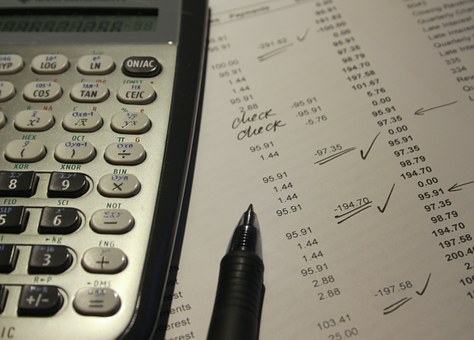Running a business is no easy feat especially for those who aspire to establish one for the first time. Before delving into a new venture, we should first understand how to analyze business expenses and profit through the items listed below.
- Types of business costs
- Break-even point
- Calculating profit
- Cost percentage and how to use it
- Sales ratios and statistics
All numerical examples below does not include government taxes yet. Feel free to create your own data based on the examples you will encounter on this article.
Types of Business Costs
Fixed Costs
Fixed cost does not vary in relation to sales. Typically, rent is considered fixed cost. In most cases, cost of rent does not vary from month to month in response to how many sales you achieve. Other examples of fixed cost are taxes and insurance premiums.
Some labor costs can also be considered fixed. Your staff who were paid regardless of the amount of business being generated have a predicable cost that remains constant throughout their contract. Full time managers, bookkeepers, cashiers, chef, janitorial services are examples of fixed labor cost. Cost of staff who were hired as a result of an increase in business are technically not considered fixed cost.
Basic energy costs like water and electricity are considered fixed cost at a certain extent. We need determine the minimum level for energy costs regardless of the number of sales. Costs that are above the minimum level should reflect an increase in business, thus are not considered fixed.
Fixed costs can be categorized as CONTROLLABLE and NON-CONTROLLABLE
- Controllable are the ones that can be changed in short term. An example for this is advertising costs, because the amount of money spent in advertising can be changed quickly.
- Non-Controllable are the ones that cannot be changed quickly by management. Most common are rent payments and depreciation.
In most basic calculations, the only fixed costs that matter are OVERHEAD COST, these are ongoing expenses required to run the business that are not direct costs of producing your product or service.
Variable Costs
These costs are directly related to products or services. For example, the use of napkins in a restaurant business or transportation allowances for your sales team in a service-related business. Other variable costs include, food, beverages, temporary staffing etc. Usually in a food business, the major variable costs is food and labor.
Semi-variable Cost
These are your fixed and variable costs at the same time. A great example is labor cost. In most situations, labor costs are fully controllable due to the fact that you are in control of how many people work in a week and how many hours should they spend per day.
Labor cost is often given a category on its own. In this context, labor cost is considered semi-variable.
Breakeven Point and Profit
The only way cost can be recovered is through sales. When your income reaches the cost for overhead, labor, and variable has been reached. It means that you have achieved your break-even point.
sales = overhead + labor + variable
Sample monthly costs:
- Overhead = $500
- labor = $750
- Variable = $1,000
- TOTAL = $2,250
In the example indicated above, break-even point occurs when you reach $2,250 in sales. It means, in order to stay in business you must achieve $2,250 sales in a month. Your profit is any amount that exceeds the break-even point.
profit = sales – (overhead + labor + variable)
Cost Percentages

In a well-run business, cost percentage will remain relatively constant even if the amount of money acquired varies on a weekly or monthly basis. However, if the volume increases, so will the efficiency, which in turn will lower production cost and increase profit.
We can acquire the cost percentage by dividing cost by sales, then expressing the answer in a percentage value.
Cost percentage = overall cost / total sales
if in particular…
Overhead cost percentage = cost overhead / total sales
labor cost percentage = cost of labor / total sales
Variable cost percentage = cost of variable / total sales
Sample:
If a food cart business has a total sales of $1,200 on a very fruitful month.
– overhead cost is $300
– Labor cost is $250
– Variable cost for food, napkins, cups, etc is $400
Overhead cost percentage = cost overhead / total sales
- $300 / $1,200
- 0.25
- = 25% (0.25 x 100)
Labor cost percentage = cost of labor / total sales
- $250 / $1,200
- 0.208
- = 20.8% (0.208 x 100)
Variable cost percentage = cost of variable / total sales
- $400 / $1,200
- 0.333
- = 33.3% (0.333 x 100)
Profit in dollars = total sales – (overhead + labor + variable)
- $1,200 – ($300 + $250 + 400)
- $1,200 – $950
- = $250
Profit percentage based on total sales
- $250 / $1,200
- 0.208
- = 20.8%
Alternatively, you can determine percentage profit by calculating the overall cost percentage and and subtract the answer by 100%.
TOTAL COST PERCENTAGE
Cost percentage = overall cost / total sales
- $950 / $1,200
- 0.792
- 79.2% (0.792 x 100)
- 79.2% – 100%
- = 20.8%
Importance of Cost Percentage?
Cost percentages are useful because they allow you to easily compare the performance of an operation at a given timeframe in a year, weekly, monthly, quarterly, etc. Or to compare two similar businesses that you own. They also allow you to make generalizations about the types of business operations. Example if you are comparing a two food cart businesses and a restaurant.
Application of Cost Percentages
The basic equation for cost percentages can be the following:
- Cost percentage = cost / total sales
- Sales = cost / cost %
- Cost – total sales x cost %
These formulas are especially useful if management decides on a cost percentage value and has to see what that percentage mean in terms of lets say menu prices. Here’s an example:
If you decide that the minimum food percentage of 30% must apply to all menu items. You want to introduce an dish that costs around $4.80 in actual food cost. To find the selling price:
Selling price = cost / cost %
- $4.80 / 30%
- $4.80 / 0.3
- = $16
Sales Ratios and Statistics

A responsible entrepreneur will ever so often generate statistics to determine the efficiency of their operations. Some statistics are based on non-monetary items such as number of customers a day and some are based on monetary sales.
These statistics determine the sales trend to know how your products are moving, calculate labor requirements, and so on.
There are actually a lot of ways to calculate sales ratio, but the most popular is to calculate what type of product is trending. As an example, let’s use a popcorn stand that offers iced tea, and three flavors of popcorn, cheese, barbecue, and sour cream.
Total of 500 items sold:
– 100 iced teas
– 200 cheese popcorn
– 150 barbecue popcorn
– 50 sour cream popcorn
sale percentage = total of a type sold / total items sold
Iced Tea Percentage
- 100 / 500
- 0.2
- = 20% (0.2 x 100)
Cheese flavored popcorn percentage
- 200 / 500
- 0.4
- = 40% (0.2 x 100)
Barbecue flavored popcorn percentage
- 150 / 500
- 0.3
- = 30% (0.3 x 100)
Sour cream flavored popcorn percentage
- 50 / 500
- 0.1
- = 10% (0.1 x 100)
This gives us a total sales portfolio of 20% iced teas, 40% cheese popcorn, 30% barbecue popcorn, and 10% sour cream popcorn. With these percentages, you will be able to determine how much you should stock in a week.
Sales percentages can also determine the optimal number of staff you need to hire to maximize efficiency and profit. This can definitely help if you plan to establish a restaurant. The statistic is simply the number of customers in a restaurant over a period of time (usually a busy period or a slow period).
If a 25-seat restaurant served 100 meals during lunchtime, the seat turnover is 2.5. This means that the average seat was occupied over two times during that period. This can be a very valuable information to determine staffing or shift modifications.
Well that’s about it for now! Thank you for taking time to read this article. If you find it useful please share it to your friends.














Hi there
Have your website been affected by all the google updates that kept coming on and on, week after week?
We have the right solution for you, to recover all your ranks and put your keywords on a positive trend
Find more about our plan, here
https://monkeydigital.co/product/ranks-recovery-seo-plan/
Contact us for more info at
[email protected]
[…] Learn About Business Expenses and Profit […]